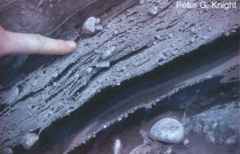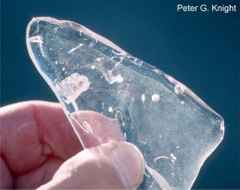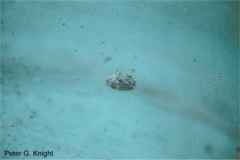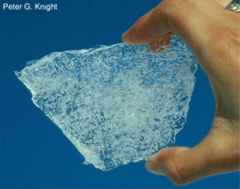|
Beginner's Guide to Basal Ice |
      |
The basal layer is the part of the glacier in which the nature of the
ice is directly affected by proximity to the glacier bed. Although
there are substantial differences between descriptions of basal ice from
different glaciers, two key characteristics seem to be typical:
2) whereas englacial ice usually contains only debris derived from the glacier surface, the basal layer can contain large amounts of debris derived from the bed of the glacier. This affects not only the chemistry and structure of the ice, but also its rheological properties and its geomorphic potential. Two major and related issues in the description and interpretation of the basal layer are the processes by which the ice is formed and the processes by which rock debris from the bed is entrained into the ice. Entrainment of debris at the bed occurs by a variety of processes including regelation, congelation, flow of water through the vein system, shearing and folding. Processes by which basal ice can be formed can be divided into: (1) processes of formation and accretion of new ice at the base of the glacier; and (2) processes of metamorphic alteration of existing ice close to the bed. In an overview of basal ice research Knight (1997) wrote as follows: "Most of the ice in glaciers and ice sheets is formed by the firnification
of snow at the glacier surface. The ice inherits many of the characteristics
of the snow, and throughout the accumulated thickness of the glacier the
characteristics of the ice can be used to reconstruct surface conditions
at the time of formation of the ice. In many glaciers, however, there
exists a thin basal layer in which the ice is conditioned primarily by
processes operating at the glacier bed. Characteristically, this layer
comprises ice and debris entrained from beneath the glacier, and also ice
that is derived from the surface but has been diagenetically modified by
thermal, strain and hydraulic conditions close to the bed. This basal ice
constitutes a lower boundary layer within the glacier, and as such is critical
to a range of glaciological issues including rheology, hydrology, and geology.
Where the glacier bed is at the melting point, the basal layer may be thin
or non-existent, while in cold and sub-polar glaciers basal ice up to several
tens of metres thick may develop. The basal layer is accessible via boreholes
drilled through the glacier to the bed, in subglacial cavities, and
where it is exposed at the glacier margin.
|